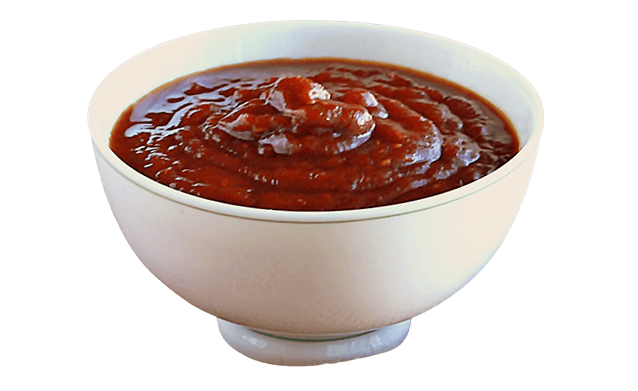
Overview - Tamarind paste
Tamarind paste or Tamarind concentrate is manufactured from high-quality tamarind fruits. Tamarind paste is manufactured under a stringent quality process and experienced professionals. Tamarind is a sour fruit that is indigenous to tropical Africa. Tamarind is popular in South East Asia, India, North Africa, Central America, and Mexico. It is extensively cultivated in India, Bangladesh, Srilanka, and South American countries.
ABC Fruits is one of the prominent non-aseptic tamarind concentrate manufacturers in India. Karnataka is the largest producer of Tamarind, with a production share of 28%. Tamil Nadu and Kerala are the second and third largest producers, with a share of 25% and 30%, respectively.
| Parameter Group | Range Value |
|---|---|
| PHYSICAL & CHEMICAL | |
| Refractometric Brix @ 20 Deg Cel | Minimum 50 – 55° |
| Acidity As % And. Citric Acid | 8.0 – 12.0 |
| pH As Natural | 2.00 – 3.00 |
| Consistency – Bostwick (20 ± 2°C ) | 2 – 3 Cm/30 sec |
| Black Specks / 10 gm | NIL |
| Brown Specks / 10 gm | NMT 10 Per 10gm |
| MICROBIOLOGICAL | |
| Total Plate Count CFU / ml | <10 |
| Yeast & Mould Count CFU / ml | <10 |
| Coliform Count Per ml | Absent |
| E.Coli | Absent |
| ORGANOLEPTIC | |
| Colour | Brown |
| Flavour & Aroma | Typical of ripe Tamarind without any off flavour |
| Taste | Characteristics of ripe Tamarind Fruits |
| Appearance | Homogenous Paste, Thick & free of any foreign matter |
| PACKING |
|---|
| Tamarind Paste is packed thermally in LDPE Liners placed on HDPE Drums |
| CONTAINER LOADING |
| 180 Drums Per 20’ Container (With Pallet) or 270 Drums Per 20’ Container (Without pallet) |
| Product net weight: Product Net weight: 50 Kg / 200 kgs / or as per customer requirement. |
| Tomato paste or concentrate should be stored at ambient temperature and not below 40C. Avoid exposure to higher temperatures and sunlight. HSN Code: |
| SHELF – LIFE |
| Best before 24 months from the date of manufacturing |
Tamarind paste manufacturing process
The tamarind paste manufacturing, the shells are removed either manually or by a machine for further processing. After removing the shell, the tamarind is transported to the soaking tank by a conveyor belt. The soaking tank softens the tamarind, and destoner machinery removes the seeds. The tamarind paste is collected in the pulp collection tank and preheated at 85-90
degrees Celsius to eliminate microorganisms. The manufactured tomato pulp is then passed through the evaporator to remove the water content. The tamarind paste is subjected to a refiner where the pulp is refined. The product is sterilised and put through—strainers to remove speck particles. The tamarind concentrate is finally packed in LDPE liners in HDPE drums. The Brix level of the tamarind concentrate is 50-55. The product can be stored in ambient temperature warehouses. Our factory is located at Krishnagiri, with an advanced manufacturing setup that makes us one of Tamil Nadu’s most preferred tamarind paste manufacturers.
Usage of Tamarind concentrate
Tamarind paste is used in various food processing industries because of its health benefits and as a raw material for culinary and beverages. The usage of tamarind concentrate over tamarind fruit is predominantly high because of the popularity of ready-to-eat foods.
Beverages: Fruit drinks, Cocktails, Nectars, and Juices.
Confectionery: Tamarind pulp or concentrate is used in Manufacturing candies, jellies, and lollipops of sweet and sour taste. Tamarind puree is also used to make fruit bars in combination with other dried fruits.
Baby food: Juices, cereals, and fresh Tamarind puree.
Other foods: Jams, sauces, squash, marinades, and chutneys.
Flavors: Tamarind pulp powder is manufactured by drying the tomato concentrate or pulp. It is an acidulant in food products and sometimes in culinary applications.
Health benefits of tamarind paste
- Tamarind is a good source of Antioxidants, Vitamins, and Vitamin B complex. It helps in strengthening the immune system.
- Tamarind paste or concentrate is rich in potassium. It aids in improving heart health and reducing cholesterol levels.
- Tamarind, when consumed as juice or beverage, acts as a cleansing agent by regulating the health of the intestines.
- The combined effect of tartaric, citric, and malic acid in the tamarind concentrate reduces blood pressure and lowers cholesterol levels.
- The presence of polyphenols helps regulate blood pressure, and flavonoids are important antioxidants.
